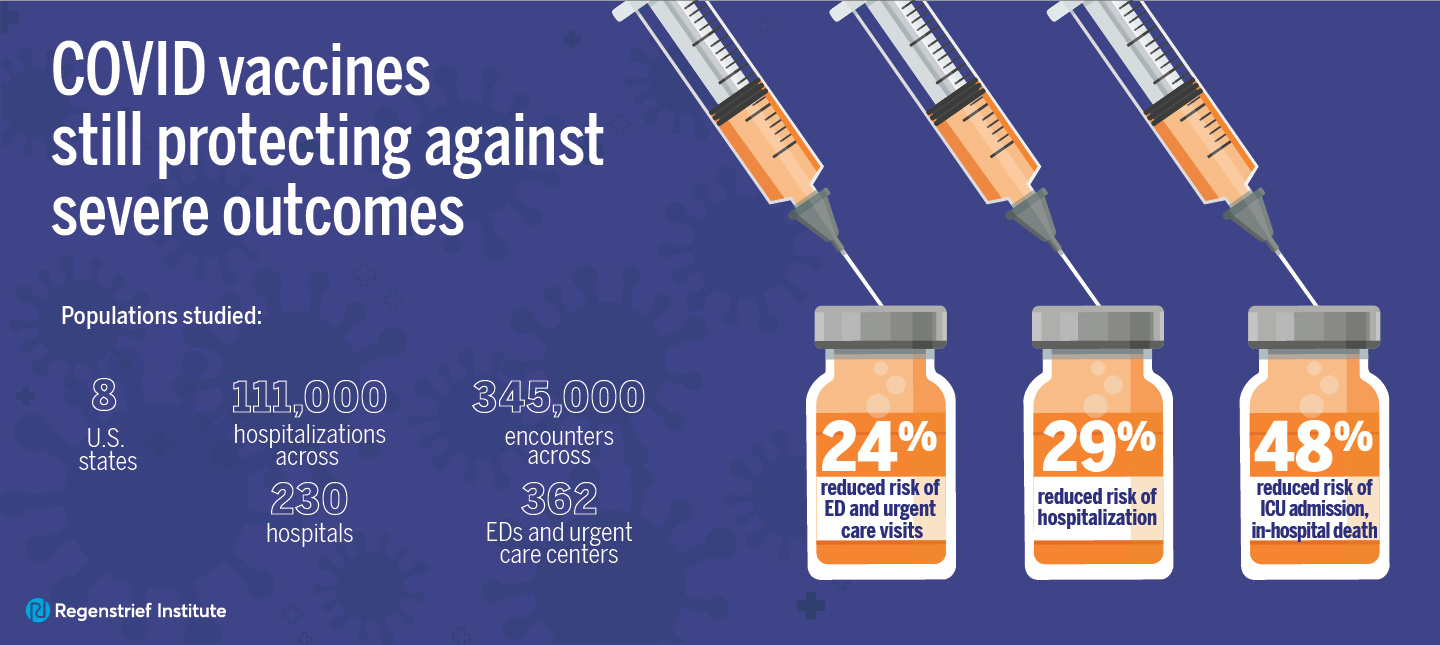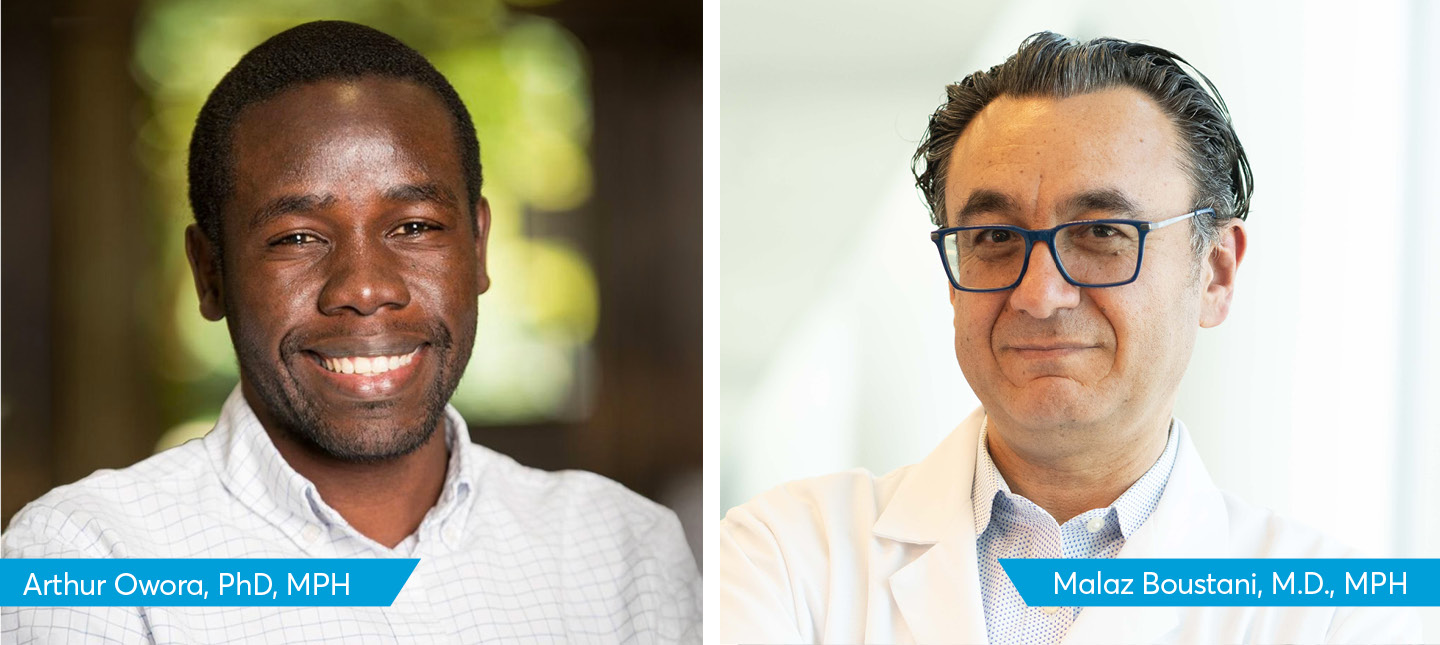Improving treatment and outcomes of common autoimmune diseases
A new study from researchers at Regenstrief Institute and Indiana University School of Dentistry reports on linking electronic health records and electronic dental records to provide better care and outcomes for individuals with Sjögren’s disease, an autoimmune disorder that can affect the entire body, including teeth. Their work may have implications for other systemic autoimmune diseases, including lupus and possibly rheumatoid arthritis.
Sjögren’s is a chronic autoimmune connective tissue disorder affecting four million Americans plus an unknown number who are undiagnosed. Patients with this condition may also have other autoimmune disorders.
Historically, because of the separation of dental and medical care, electronic medical and dental records are not linked or routinely shared. Dental providers rely on patients to report their diagnosis of Sjögren’s as this information is not conveyed by their physicians. As a result, dentists typically recognize the patient’s condition late in the disease process when tooth decay leading to significant tooth loss is manifested.
The Regenstrief and IU researchers linked electronic health records from the Indiana Network for Patient Care of individuals with Sjögren’s disease with their electronic dental records. Fewer than a third of patients diagnosed by their physicians had informed their dental providers of the diagnosis. Without this information, dentists didn’t know to provide treatment which could help preserve teeth and improve overall health.
This is one of the first studies to characterize how physicians diagnose Sjögren’s in community practice settings and to illustrate different clinical presentations of the disease using matched electronic dental and health records.
Sjögren’s is difficult to diagnose because it has many symptoms which are similar to those of other conditions and there is no single, definitive test for Sjögren’s. The most common symptoms include dryness of the mouth and eyes, tooth decay, fatigue and chronic pain. But major organ involvement, neuropathies and lymphomas may also occur.
In the United States, the average time from onset of symptoms to diagnosis is three years, allowing the disease to initially progress unchecked. Nine out of 10 individuals with Sjögren’s are women.
“We conducted this research because of the huge oral disease burden that Sjögren’s patients experience which leads to premature tooth loss by the time they’re in middle age,” said study senior and corresponding author Thankam Thyvalikakath, DMD, MDS, PhD, who leads the Regenstrief Institute-IU School of Dentistry Dental Informatics Program. “In spite of the fact that patients with Sjögren’s disease typically have a high level of awareness regarding their health, because they don’t inform their dentist, they end up losing their teeth, which can have a huge impact on their quality of life. They may be unable to hold full-time jobs because they have a lot of dental decay and have missing or damaged teeth. Without the information from the patient’s electronic medical record, dentists don’t have a complete picture and don’t know to evaluate treatment which could preserve teeth.
“We believe the methods we developed in this study and our results can lead to more large-scale studies to understand the disease over time, which may have the potential to topple silos and for earlier diagnosis than the current three-year lag and for earlier treatment,” she added. “We are thinking beyond dentistry. We are thinking about an inclusive healthcare system, not one in which dentistry, like mental health, is considered a stepchild.”
“Dentists see many patients, especially women, with nonspecific symptoms, like joint pain and fatigue, but it’s very difficult for a dental professional to know about their patient’s complete list of medical conditions,” said study first author Grace Gomez Felix Gomez, BDS, MPH, PhD. “If the patient, who has not been diagnosed with Sjögren’s, mentions dry mouth symptoms, perhaps the dentist should go ahead and do some preliminary salivary flow test to help identify the cause, which could be Sjögren’s. If it is, the dentist could then refer the patient to a rheumatologist or other medical specialist to rule out underlying conditions. Further confirmation on the diagnosis of Sjögren’s also requires a referral to oral medicine and/or oral pathology specialists.
“This is a goal we hope to facilitate by showing the benefits of linking electronic dental and medical records. Unfortunately, Medicare and many health insurances do not pay for tests and treatments performed in dental offices, which makes working together with physicians more difficult for oral health providers. Screening and awareness of Sjögren’s and its symptoms should be spread through educational programs targeting women to encourage them to talk to both medical and dental clinicians.”
The Indiana Network for Patient Care (INPC) was created by Regenstrief Institute and is one of the largest and longest running health information exchanges. The INPC is managed by the Indiana Health Information Exchange. Regenstrief provides access to the data for purposes of research. The INPC includes more than 73,000 clinical practices, health systems and other providers with more than 20 million patients and more than 16 billion clinical data elements.
“Characterizing Clinical Findings of Sjögren’s Disease Patients in Community Practices Using Matched Electronic Dental-Health Record Data” is published in PLOS One. The study is funded by the National Institutes of Health’sNational Institute of Dental and Craniofacial Research grants R21 DE027786-02 and 1R56DE029195-01.
Authors and affiliations
Grace Gomez Felix Gomez1,2, Steven T. Hugenberg3,4, Susan Zunt5, Jay S. Patel1,6, Mei Wang1, Anushri Singh Rajapuri1,2, Lauren R. Lembcke7, Divya Rajendran1,8, Jonas C. Smith7,9, Biju Cheriyan1, LaKeisha J. Boyd10, George J. Eckert10, Shaun J. Grannis2,3, Mythily Srinivasan5, Domenick T. Zero1, and Thankam P. Thyvalikakath1,2.
1Dental Informatics, Department of Cariology, Operative Dentistry & Dental Public Health, Indiana University School of Dentistry, Indianapolis, Indiana, United States of America
2Center for Biomedical Informatics, Regenstrief Institute Inc., Indianapolis, Indiana, United States of America
3Indiana University School of Medicine, Indianapolis, Indiana, United States of America
4Indiana University Health, Indianapolis, Indiana, United States of America
5Department of Oral Pathology, Medicine and Radiology, Indiana University School of Dentistry, Indianapolis, Indiana, United States of America
6Department of Health Services Administration and Policy, College of Public Health, Temple University, Philadelphia, Pennsylvania
7Regenstrief Data Services, Regenstrief Institute Inc, Indianapolis, Indiana, United States of America
8Innovation Associates iA, Indianapolis, Indiana, United States of America
9Med Shield, Inc., Indianapolis, Indiana, United States of America
10Department of Biostatistics and Health Data Sciences, Indiana University School of Medicine, Indianapolis, Indiana, United States of America
Thankam Thyvalikakath, DMD, MDS, PhD
In addition to her role as a research scientist with the Clem McDonald Center for Biomedical Informatics at Regenstrief Institute and director of the Regenstrief and IU School of Dentistry Dental Informatics Program, Thankam Thyvalikakath, DMD, MDS, PhD, is a professor and the associate dean of dental informatics and digital health at IU School of Dentistry and an adjunct professor in the IUPUI Luddy School of Informatics, Computing and Engineering.
Grace Gomez Felix Gomez, BDS, MPH, PhD
In addition to serving as a research scientist with the Clem McDonald Center for Biomedical Informatics at Regenstrief Institute, Grace Gomez Felix Gomez, BDS, MPH, PhD, is an assistant professor at Indiana University School of Dentistry.
About the Regenstrief-IU School of Dentistry Dental Informatics Program
Established in 2019, the Regenstrief Institute-IU School of Dentistry Dental Informatics Program is one of the first in the U.S. The program uses both electronic dental and medical record data for clinical research to develop interoperable databases and advance the knowledge of oral health problems that cause, co-occur with, or result from medical conditions. The goal is to implement findings into dental clinics and other points of care.
About Regenstrief Institute
Founded in 1969 in Indianapolis, the Regenstrief Institute is a local, national and global leader dedicated to a world where better information empowers people to end disease and realize true health. A key research partner to Indiana University, Regenstrief and its research scientists are responsible for a growing number of major healthcare innovations and studies. Examples range from the development of global health information technology standards that enable the use and interoperability of electronic health records to improving patient-physician communications, to creating models of care that inform practice and improve the lives of patients around the globe.
Sam Regenstrief, a nationally successful entrepreneur from Connersville, Indiana, founded the institute with the goal of making healthcare more efficient and accessible for everyone. His vision continues to guide the institute’s research mission.
About Indiana University School of Dentistry
The only dental school in the Hoosier state, Indiana University School of Dentistry (IUSD) offers an extraordinary learning environment in which teaching, research and community service come together in the best way possible for the preparation of tomorrow’s dental professionals. About 80 percent of the dentists practicing in the state of Indiana are alumni of the school.
Founded in 1879 in Indianapolis, IUSD is located on the health sciences campus of IUPUI, one of the outstanding urban universities in the United States with a recognized commitment to community engagement. IUSD capitalizes on the campus’s central location in the state and its position in the research corridor that links IUPUI, Purdue University West Lafayette, and Indiana University Bloomington. IUSD faculty conduct world-class interdisciplinary research in collaboration with the other IU health science schools and the Purdue Schools of Engineering and Technology and Science.









